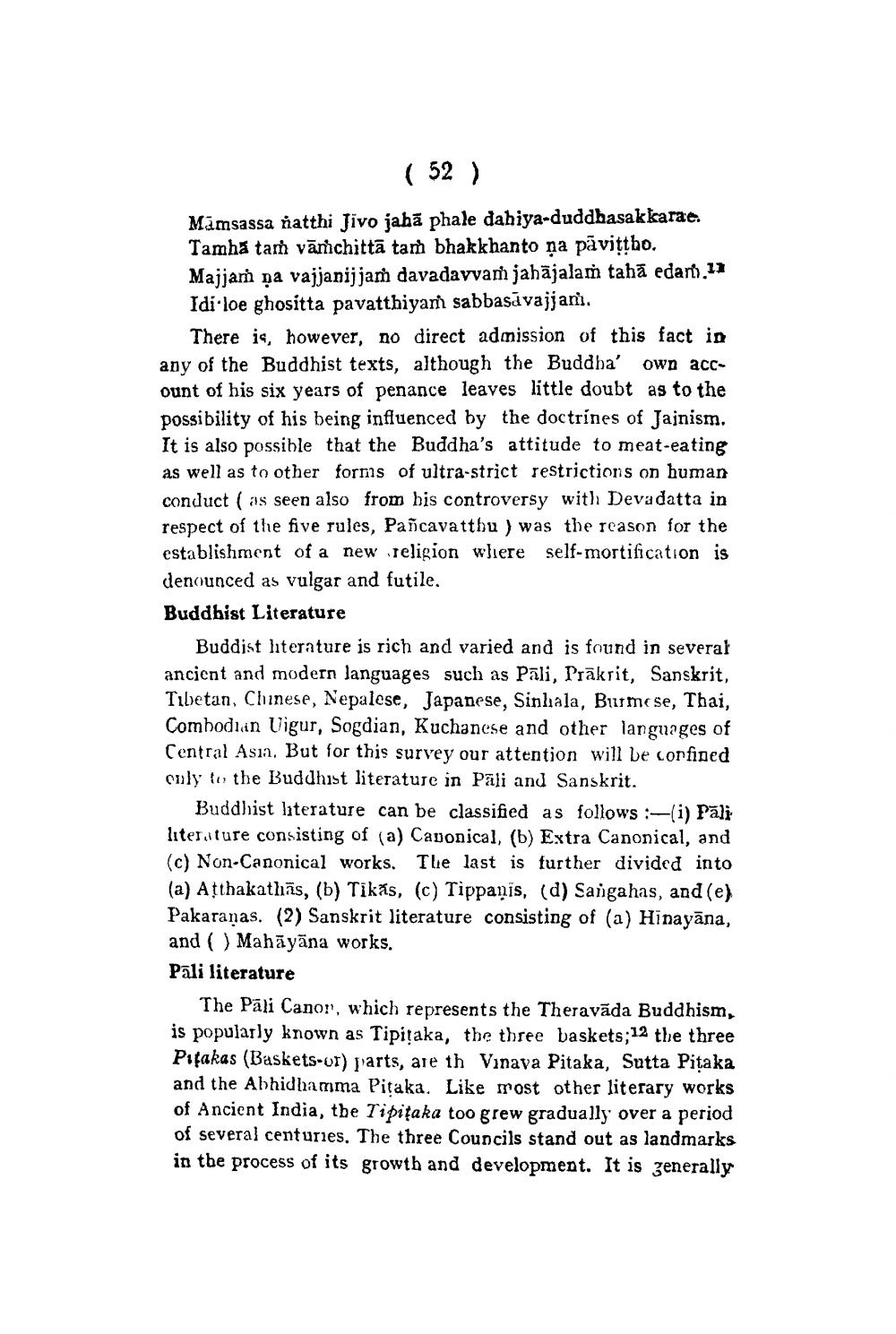________________
(52)
Mamsassa natthi Jivo jahā phale dahiya-duddhasak karae. Tamha tam vāmchittā tam bhakkhanto na pävittho. Majjam pa vajjanijjam davadayvam jahājalar tahā edam.17 Idi loe ghositta pavatthiyam sabbasavajjani.
There is, however, no direct admission of this fact in any of the Buddhist texts, although the Buddha' own account of his six years of penance leaves little doubt as to the possibility of his being influenced by the doctrines of Jainism. It is also possible that the Buddha's attitude to meat-eating as well as to other forms of ultra-strict restrictions on human conduct ( as seen also from bis controversy with Devadatta in respect of the five rules, Pancavatthu ) was the reason for the establishment of a new religion where self-mortification is denounced as vulgar and futile. Buddhist Literature
Buddist literature is rich and varied and is found in several ancient and modern languages such as Pāli, Prakrit, Sanskrit, Tibetan, Chinese, Nepalese, Japanese, Sinhala, Bu mese, Thai, Combodian Uigur, Sogdian, Kuchanese and other languages of Central Asia. But for this survey our attention will be corfined only to the Buddhist literature in Pāli and Sanskrit.
Buddhist literature can be classified as follows :-(i) Pāli literature consisting of (a) Caponical, (b) Extra Canonical, and (c) Non-Canonical works. Tlie last is further divided into (a) Atthakathās, (b) Tikäs, (c) Tippaņis, (d) Sangahas, and (e) Pakaranas. (2) Sanskrit literature consisting of (a) Hinayāna, and ) Mahāyāna works. Pali literature
The Pali Canor, which represents the Theravada Buddhism, is popularly known as Tipitaka, the three baskets;12 the three Pifakas (Baskets-ot) parts, are th Vinava Pitaka, Sutta Pitaka and the Abhidhamma Pitaka. Like most other literary works of Ancient India, the Tipițaka too grew gradually over a period of several centuries. The three Councils stand out as landmarks in the process of its growth and development. It is generally




